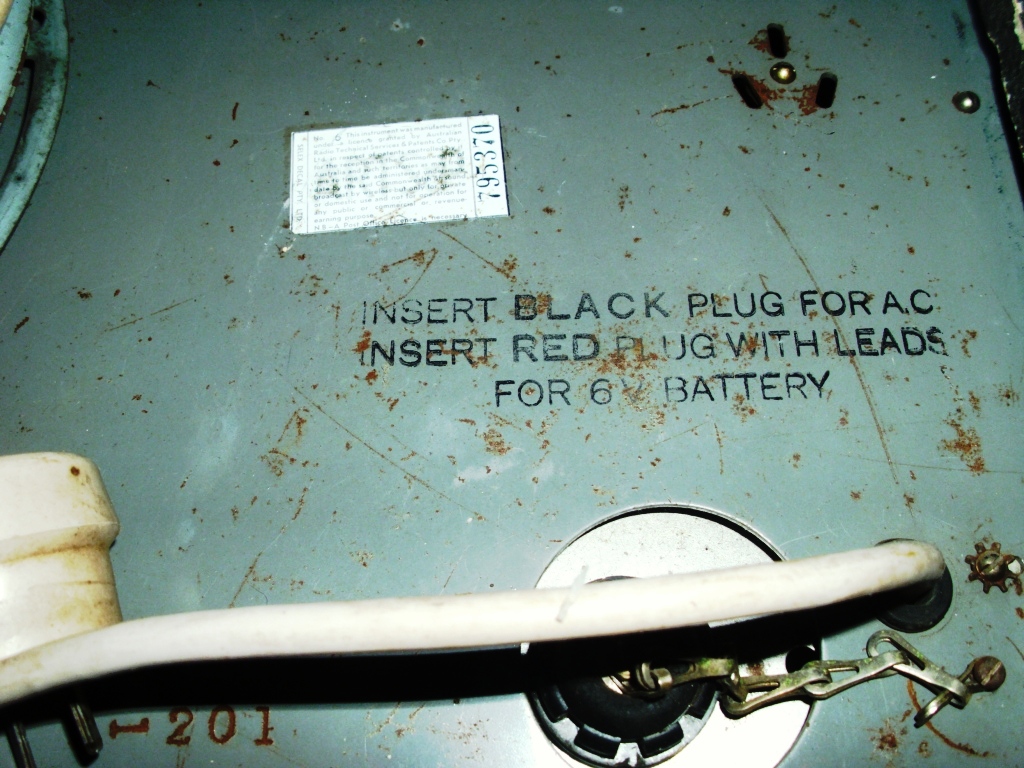
ARTS&P Label
The manufacture of radio receivers in Australia, was subject to
over 1500 patents, registered in the country of origion, and also in Australia.
The main ones being
SELECTIVE TUNING SYSTEMS, Ernst F.W. Alexanderson,
USA, 1913, Australian Patent 18,404/20 1920,
THE SUPERSONIC HETERODYNE (SUPERHETERODYNE) PRINCIPLE, Lucien Levey,
France 1917, Australian Patent 16552/20 1926,
NEUTRALISATAION OF CAPACITANCE COUPLING IN TRIODE RADIO FREQUENCY AMPLIFIERS,
Louis A. Hazeltine, USA 1924, Australian Patent 19,999/24 1924.
These were difficult to enforce, so a company was set up in 1933 to pool all the patents.
It was called the Australian Radio Technical Services and Patents Company Limited,
(ARTS&P) and enforced the patents represented in Australia by AWA, STC, and Philips.
Radio manufacturers payed annual royalties for the items they were manufacturing that were covered by Patents. It was based on the number of "electron streams" used in the radio, but excluded the rectifer. The cost varied from 2 shillings to 3 shillings and sixpence, per stream, according to the number of receivers produced per annum. The use began to decline in 1956, after local televison manufacture commenced, and patents began to expire. With the introduction of colour televison in 1974, ARTS&P patent involvement had almost ceased. Some radio makers avoided the patents by selling parts, rather than complete radios, even though the parts could be easily assembled into a radio. Each licensed radio was fitted with a small sticker attached to the back of the chassis.It was a different colour each year, and had the number of streams in the corner of the label.
The colour of the sticker is a useful way of determining the age of manufacture.
1934 White, serial number prefixed by the letter A
1935-1936 Pale blue, serial number prefixed by the letter
B
1936 Pale blue, serial number prefixed by the letter
C
1937 Pale blue, serial number prefixed by the letter
D
1938 Pale blue, serial number prefixed by the letter
E
1939-1940 Pale blue, serial number prefixed by the
letter F
1940-1941 Pale blue, serial number prefixed by the
letter G
1942-1946 Pale blue, serial number prefixed by the
letter H
1946-1952 Dark Green with red letters, serial number prefixed
by the letter T
1952-1955 Orange with dark green letters, serial
number prefixed by the letter T
1955-1960s Small pale blue, with dark blue letters,
no prefix to the serial number.

ARTS&P Label
References
AUSTRALIAN RADIO The Technical Story 1923-1983 Winston T. Muscio, Kangaroo Press, 1984 ISBN 0 949924 82 2
How Old is Your Radio, H.R.S.A. Newsletter, October 1987, P20
Copyright
Ray Robinson VK2NO